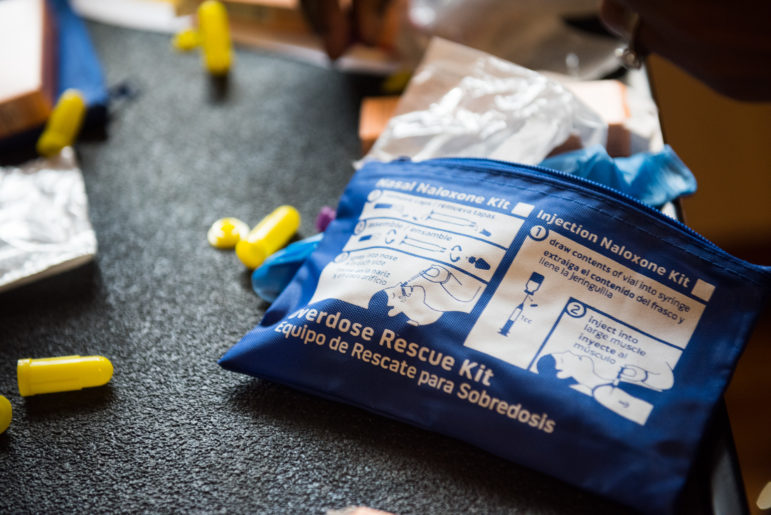‘While the HIV/AIDS epidemic may not look like it did 30 years ago, little has changed in recent years to eradicate the virus. We are still fighting the same battle to make sure our solutions to end the epidemic are inclusive of people who use drugs.’

Edwin J. Torres/NYC Mayor’s Office
An overdose prevention kit.I started working on the HIV/AIDS epidemic before I even knew I was carrying the virus myself. Before I was diagnosed in 1994, I was all too familiar with the way the virus passed from one person to another, and the fallout the virus has on other parts of our lives. Because of a shortage in sterile syringes, my brother was forced to use our stepfather’s supplies that he used to treat his diabetes, resulting in both my brother and stepfather contracting HIV. For me, HIV has always been linked to the stigma and lack of resources for people who use drugs.
On World AIDS Day, my wish is that our state will recommit to ending the epidemic with harm reduction. New York failed to follow through on the End the Epidemic Blueprint crafted back in 2014 under then-Governor Andrew Cuomo’s leadership. Now, with a new governor and incoming mayor in New York City, we must immediately invest in evidence-based solutions that are rooted in harm reduction as a part of the strategy to end HIV/AIDS in New York.
The deadly consequences of the reality people who use drugs face can be seen to this day, and is a reason why HIV is still an active threat to the health and wellbeing of our communities. Just this past year, a new HIV cluster developed in Monroe County—a direct result of the syringe shortage caused by former Gov. Cuomo’s decision to starve harm reduction organizations of funding during the COVID-19 pandemic. While the HIV/AIDS epidemic may not look like it did 30 years ago, little has changed in recent years to eradicate the virus. We are still fighting the same battle to make sure our solutions to end the epidemic are inclusive of people who use drugs.
 CityViews are readers’ opinions, not those of City Limits. Add your voice today!
CityViews are readers’ opinions, not those of City Limits. Add your voice today!
One of my first fights in the movement to end AIDS was to make sure that women were being centered in our demands. Specifically, I worked to make sure pregnant women had access to HIV testing before they were in the delivery room. As a woman who formerly used drugs myself, I have worked for decades alongside countless allies to pass legislation to make sure everyone is being represented in this movement.
If we really want to stop the spread of the virus, we must prioritize life saving tools and support that they need. Overdose Prevention Centers (OPCs) are the necessary next step in this effort. Myself and many other leaders from across the state in the VOCAL-NY Users Union have fought to implement these centers, where people can use drugs under clinical supervision and be connected to health and social services they may need. This includes providing participants with sterile syringes—an invaluable public health tool that has been proven to lower HIV/AIDS transmission significantly.
On Monday, Mayor de Blasio announced a major milestone on this front, announcing the launch of two OPCs in Manhattan—the first publicly recognized sites in the nation—as part of the city’s fight against the opioid overdose crisis. This legislative session, our state lawmakers have another chance to make history and begin to tackle the spread of HIV/AIDS through the lens of harm reduction by passing the Safe Consumption Spaces Act (SCSA). This life saving bill, introduced by Senator Gustavo Rivera and Assemblymember Linda Rosenthal, would authorize OPCs to open across New York State—a necessary tool in ending HIV/AIDS in New York State.
New York once led the nation in innovative and effective solutions to the HIV/AIDS epidemic, and yet our city and state leaders have failed to make these spaces a reality for our communities. It’s time that changes. On World AIDS Day, we urge Governor Hochul and Mayor-elect Adams to recognize the role harm reduction can play in ending the HIV/AIDS epidemic.
Asia Betancourt is a leader with VOCAL-NY who has lived with HIV for nearly 30 years.








